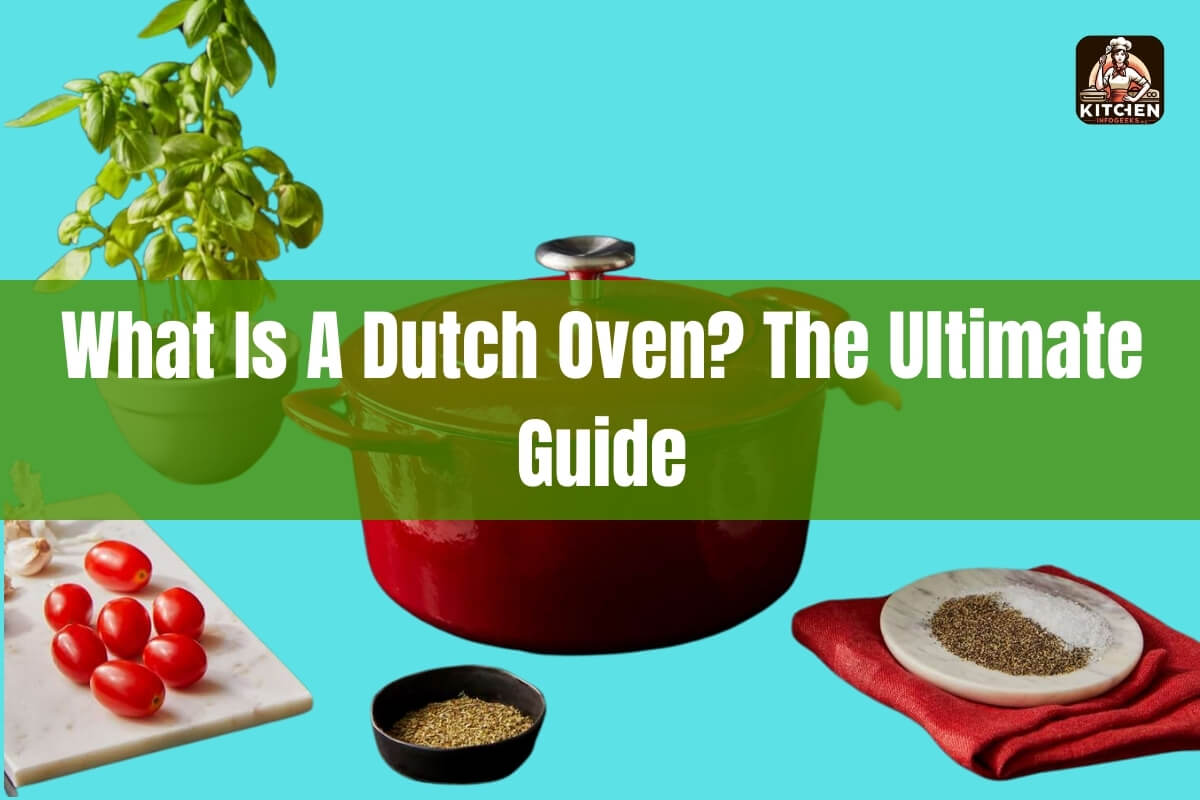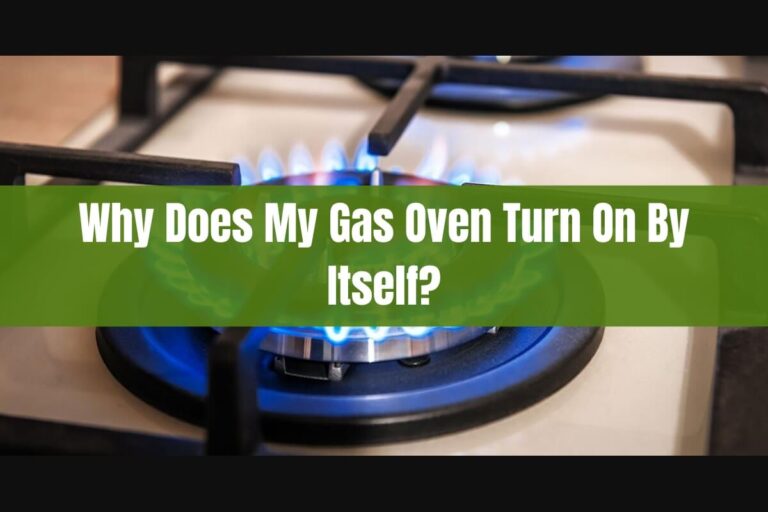
Have you ever wondered about those heavy, thick-walled pots with tight-fitting lids? The ones that seem to be able to cook just about anything? Those are called Dutch ovens, and they are an essential tool for any home cook.
A Dutch oven is a thick-walled cooking pot with a tight-fitting lid. It is designed for even heat distribution and heat retention, allowing for versatile cooking techniques like braising, baking, frying, and more. Dutch ovens come in various materials like cast iron, enameled cast iron, ceramic, and aluminum.
In this ultimate guide, we’ll dive deep into everything you need to know about Dutch ovens. We’ll cover their history, materials, sizes, uses, how to choose the right one, and how to care for your Dutch oven properly.
The History and Origins of Dutch Ovens
Dutch ovens have been around for centuries, with their origins tracing back to the Netherlands in the 17th century. Back then, the Dutch were renowned for their skilled use of cast iron and sandcasting techniques to create durable cookware.
The name “Dutch oven” is believed to have derived from these Dutch casting methods or from the early Dutch traders who sold similar cast iron pots. However, the exact origins of the name remain unclear.
Traditionally, Dutch ovens were used for cooking over open fires or in hearths. Their tight-fitting lids trapped heat and moisture, allowing for slow cooking of stews, breads, and other hearty dishes.
What Are Dutch Ovens Made Of?
While the original Dutch ovens were made of simple cast iron, modern Dutch ovens come in various materials to suit different needs and budgets.
Cast Iron Dutch Ovens
Cast iron is the classic material for Dutch ovens, prized for its excellent heat retention and even heat distribution. There are two main types of cast iron Dutch ovens:
- Seasoned Cast Iron: These are unseasoned cast iron pots that need to be seasoned regularly by coating them with a thin layer of oil and baking it in. Proper seasoning creates a natural non-stick surface and protects the cast iron from rusting. Pros: Excellent heat retention, versatile for all cooking surfaces, relatively inexpensive. Cons: Requires regular seasoning, can react with acidic foods, not dishwasher safe.
- Enameled Cast Iron: These have a glassy, vitreous enamel coating over the cast iron base. Popular enameled Dutch oven brands include Le Creuset, Staub, Cuisinart, and Lodge. Pros: Doesn’t require seasoning, can cook acidic foods, easy to clean, available in various colors. Cons: More expensive than plain cast iron, can chip or crack if not cared for properly.
Other Dutch Oven Materials
While cast iron remains the standard, Dutch ovens are also available in other materials like:
- Ceramic: Lighter than cast iron but can crack under temperature changes. Examples are Emile Henry and Romertopf clay bakers.
- Aluminum: Affordable and lightweight but lacks the heat retention of cast iron. Examples are Cuisinart and Calphalon lines.
- Copper: Excellent heat conductivity but very expensive. Brands like Matfer Bourgeat offer copper options.
Dutch Oven Sizes and Shapes
Dutch ovens typically come in two shape options – round or oval. The shape you choose depends on what you’ll be cooking most often.
Round Dutch Ovens are the standard, most versatile shape that works well for most cooking tasks like stews, soups, bread baking, etc. They range from tiny 1-2 quart sizes all the way up to large 9+ quart family-sized pots.
Oval Dutch Ovens are elongated and better suited for larger cuts of meat like whole chickens or pork loins that wouldn’t fit as easily in a round pot.
As for sizes, here are some general guidelines on typical Dutch oven capacities:
- 2-3 quarts: Good for side dishes or smaller 2-4 person recipes
- 5-6 quarts: The most popular mid-sized oven for 4-6 people
- 7-8 quarts: Larger portions, good for families and meal prep
- 9+ quarts: Great for batch cooking, large roasts, crowd-sized portions
Uses and Versatility of Dutch Ovens
The true beauty of Dutch ovens lies in their versatility. With their sturdy construction and even heat distribution, they can handle just about any cooking task you throw at them. Let’s explore some of the most common uses:
Slow Cooking and Braising
Slow, moist heat cooking is where Dutch ovens really shine. Their tight lids trap steam and moisture, allowing tough cuts of meat to become incredibly tender through braising techniques. Think hearty stews, chilis, pot roasts, and more.
Baking Bread
Dutch ovens create the perfect environment for baking crispy, artisan-style bread loaves at home. By trapping steam inside, the bread develops an incredible crunchy crust while staying moist inside.
Frying and Searing
With their ability to reach screaming hot temperatures, Dutch ovens are excellent vessels for frying foods or getting an incredible sear on meats before finishing in the oven.
One-Pot Meals
Their deep sides and ample capacity make Dutch ovens perfect for one-pot cooking. You can sear proteins, saute veggies, simmer sauces, all in one pot for easy cleanup.
Camping and Outdoor Cooking
Thick cast iron walls let you place Dutch ovens directly over a campfire or coal bed for rustic outdoor cooking and even baking.
Other Uses
The versatility doesn’t stop there! You can also use your Dutch for roasting meats and veggies, poaching proteins, making jams or applesauce, and much more.
How to Choose the Right Dutch Oven
With so many options in materials, sizes, and price points, choosing your ideal Dutch oven can seem daunting. Here are some key factors to consider:
Size: As a general guideline, select a 5-7 quart Dutch oven if you’ll be cooking for 4-6 people most often. Scale up or down from there based on your household’s typical portion needs.
Shape: Round is the most versatile for general cooking, while oval is better if you frequently cook large roasts or chickens.
Material: For an affordable yet highly durable option, go with a quality enameled cast iron Dutch oven like those from Le Creuset or Lodge. Plain seasoned cast iron requires more maintenance but is a budget-friendly choice.
Weight: Keep in mind that cast iron (enameled or not) is extremely heavy when full. Make sure you can comfortably lift and maneuver your desired size.
Budget: Entry-level cast iron or aluminum Dutch ovens can cost $50-100, while premium enameled models from brands like Staub or Le Creuset can exceed $300 for larger sizes.
Cleaning and Caring for Your Dutch Oven
With proper care and maintenance, a good quality Dutch oven can last for decades if not generations. Here are some tips for cleaning and caring for yours:
Cleaning Enameled Cast Iron
- Let the pot cool completely before cleaning to avoid thermal shock cracking
- Hand wash with gentle dish soap and non-abrasive sponges/cloths
- For tough, stuck-on stains, boil a baking soda and water solution in the pot
- Avoid abrasive scouring pads or harsh oven cleaners as they can damage the enamel
Cleaning Plain Cast Iron
- Hand wash with a stiff brush and hot water, avoiding soap which can strip seasoning
- Thoroughly dry over heat to prevent rust
- Re-season the cooking surface periodically with a light coat of oil
Seasoning Cast Iron
For unseasoned cast iron, build up a seasoned patina by coating with a thin layer of oil and baking it in a hot oven. This polymerized oil layer prevents sticking and rust.
Proper Storage
Store your Dutch oven with the lid ajar to prevent moisture buildup. For cast iron pots, rub with a thin coat of oil before storage to protect the seasoning. Enameled ovens just need a quick wipe down.
Whether you’re a seasoned home chef or just starting your culinary journey, a high-quality Dutch oven is an indispensable addition to your kitchen arsenal. With this comprehensive guide under your belt, you can navigate the world of Dutch ovens with confidence. From choosing your perfect oven to mastering cooking techniques to keeping it performing flawlessly for decades – you’re now equipped to unlock the endless versatility Dutch ovens offer.






